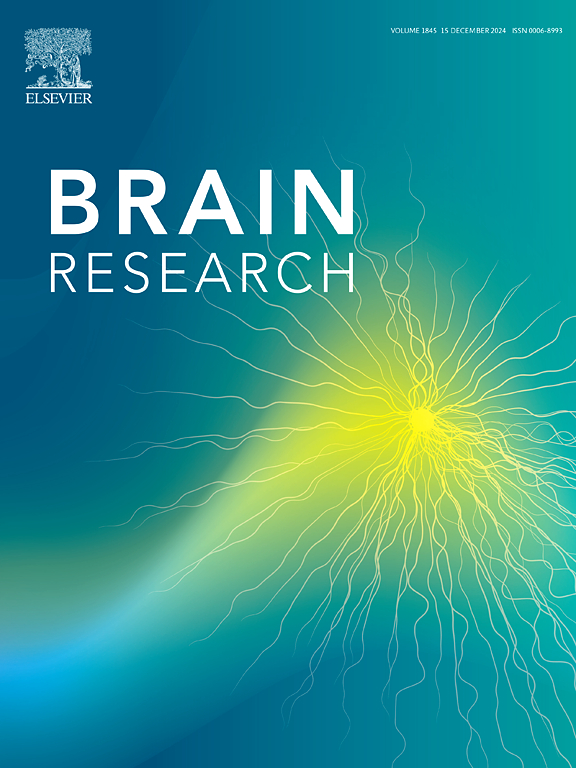增强神经元活力:10%人脑脊液在原代神经元培养中的保护作用。
IF 2.7
4区 医学
Q3 NEUROSCIENCES
引用次数: 0
摘要
人脑脊液(hCSF)是一种富含神经营养因子、信号分子和支持神经元发育、存活和功能的必需代谢物的培养基。虽然其神经保护特性已在器官型脑切片和人类ipsc衍生模型中得到证实,但其在初级啮齿动物皮层神经元培养中的应用(研究突触发育和神经变性的基础系统)仍未得到充分探索。在这项研究中,我们系统地评估了补充hCSF对胚胎第18天(E18)大鼠胚胎原代皮质培养物神经元活力的影响。为了确定最佳浓度,我们测试了一系列培养基:hCSF的比例,并确定90:10(即10% hCSF)是提高神经元存活最有效的浓度。采用两种互补检测方法评估细胞活力:SYTOX Green检测死细胞,Calcein AM/Ethidium Homodimer-2 (EthD2)双染色定量活/死细胞群。我们的研究结果表明,在标准的体外条件下,补充10%的hCSF可显著减少细胞死亡并改善整体神经元健康。这种优化的方法为改善分离的皮质神经元培养提供了一种可重复和生理相关的策略,并对神经退行性疾病的体外建模、神经毒性筛选和再生神经科学研究具有重要意义。本文章由计算机程序翻译,如有差异,请以英文原文为准。

Enhancing neuronal viability: The protective role of 10% human cerebrospinal fluid in primary neuronal cultures
Human cerebrospinal fluid (hCSF) is a physiologically rich medium containing neurotrophic factors, signaling molecules, and essential metabolites that support neuronal development, survival, and function. While its neuroprotective properties have been demonstrated in organotypic brain slices and human iPSC-derived models, its application in primary rodent cortical neuron cultures—a foundational system for studying synaptic development and neurodegeneration—remains underexplored. In this study, we systematically evaluated the effects of hCSF supplementation on neuronal viability in primary cortical cultures derived from embryonic day 18 (E18) rat embryos. To determine the optimal concentration, we tested a range of media:hCSF ratios and identified 90:10 (i.e., 10% hCSF) as the most effective for enhancing neuronal survival. Cell viability was assessed using two complementary assays: SYTOX Green for detecting dead cells and Calcein AM/Ethidium Homodimer-2 (EthD2) dual-staining for quantifying live/dead cell populations. Our results show that 10% hCSF supplementation significantly reduces cell death and improves overall neuronal health under standard in vitro conditions. This optimized approach offers a reproducible and physiologically relevant strategy for improving dissociated cortical neuron cultures and has important implications for in vitro modeling of neurodegenerative diseases, neurotoxicity screening, and regenerative neuroscience research.
求助全文
通过发布文献求助,成功后即可免费获取论文全文。
去求助
来源期刊

Brain Research
医学-神经科学
CiteScore
5.90
自引率
3.40%
发文量
268
审稿时长
47 days
期刊介绍:
An international multidisciplinary journal devoted to fundamental research in the brain sciences.
Brain Research publishes papers reporting interdisciplinary investigations of nervous system structure and function that are of general interest to the international community of neuroscientists. As is evident from the journals name, its scope is broad, ranging from cellular and molecular studies through systems neuroscience, cognition and disease. Invited reviews are also published; suggestions for and inquiries about potential reviews are welcomed.
With the appearance of the final issue of the 2011 subscription, Vol. 67/1-2 (24 June 2011), Brain Research Reviews has ceased publication as a distinct journal separate from Brain Research. Review articles accepted for Brain Research are now published in that journal.
 求助内容:
求助内容: 应助结果提醒方式:
应助结果提醒方式:


